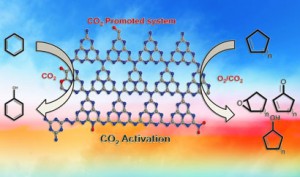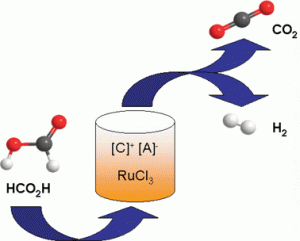This month sees the following articles in Green Chemistry that are in the top ten most accessed:-
Converting carbohydrates to bulk chemicals and fine chemicals over heterogeneous catalysts
Maria J. Climent, Avelino Corma and Sara Iborra
Green Chem., 2011, 13, 520-540 DOI: 10.1039/C0GC00639D, Critical Review
5-Hydroxymethylfurfural (HMF) as a building block platform: Biological properties, synthesis and synthetic applications
Andreia A. Rosatella, Svilen P. Simeonov, Raquel F. M. Frade and Carlos A. M. Afonso
Green Chem., 2011, 13, 754-793 DOI: 10.1039/C0GC00401D, Critical Review
Expanding GSK’s solvent selection guide – embedding sustainability into solvent selection starting at medicinal chemistry
Richard K. Henderson, Concepción Jiménez-González, David J. C. Constable, Sarah R. Alston, Graham G. A. Inglis, Gail Fisher, James Sherwood, Steve P. Binks and Alan D. Curzons
Green Chem., 2011, 13, 854-862 DOI: 10.1039/C0GC00918K, Paper
Viable methodologies for the synthesis of high-quality nanostructures
Jonathan M. Patete, Xiaohui Peng, Christopher Koenigsmann, Yan Xu, Barbara Karn and Stanislaus S. Wong
Green Chem., 2011, 13, 482-519 DOI: 10.1039/C0GC00516A, Critical Review
Synthesis of highly stable dispersions of nanosized copper particles using l-ascorbic acid
Jing Xiong, Ye Wang, Qunji Xue and Xuedong Wu
Green Chem., 2011, 13, 900-904 DOI: 10.1039/C0GC00772B, Paper
The irruption of polymers from renewable resources on the scene of macromolecular science and technology
Alessandro Gandini
Green Chem., 2011, Advance Article DOI: 10.1039/C0GC00789G, Critical Review
A critical assessment of the greenness and energy efficiency of microwave-assisted organic synthesis
Jonathan D. Moseley and C. Oliver Kappe
Green Chem., 2011, 13, 794-806 DOI: 10.1039/C0GC00823K, Perspective
Searching for green solvents
Philip G. Jessop
Green Chem., 2011, Advance Article DOI: 10.1039/C0GC00797H, Perspective
A simple and efficient protocol for a palladium-catalyzed ligand-free Suzuki reaction at room temperature in aqueous DMF
Chun Liu, Qijian Ni, Fanying Bao and Jieshan Qiu
Green Chem., 2011, Advance Article DOI: 10.1039/C0GC00176G, Paper
Processing of metals and metal oxides using ionic liquids
Andrew P. Abbott, Gero Frisch, Jennifer Hartley and Karl S. Ryder
Green Chem., 2011, 13, 471-481 DOI: 10.1039/C0GC00716A, Critical Review
Why not take a look at the articles today and blog your thoughts and comments below.
Fancy submitting an article to Green Chemistry? Then why not submit to us today or alternatively email us your suggestions.














